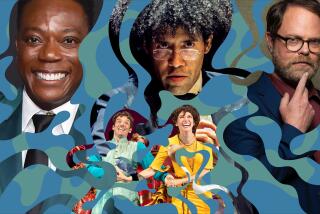Newsletter: Essential Arts: Questions of power and race after last-minute firing of a play’s director
- Share via
The heat is blazing in L.A. — making it a good time for museum air conditioning. I’m Los Angeles Times staff writer Carolina A. Miranda with the week’s essential arts news:
Passed over
The Echo Theater Company was set to premiere Antoinette Nwandu‘s play “Pass Over,” which explores themes of race in the U.S. But 24 hours before hitting the stage, the production was mysteriously canceled. This followed tensions between the play’s director, Deena Selenow, who is black, and Echo’s artistic director Chris Fields, who is white. The Times’ Makeda Easter investigates what went wrong.
On the stage
Hugh Jackman, writes Times theater critic Charles McNulty, “is the last of a dying breed: the all-around entertainer.” The Australian performer had his many skills on display — singing, dancing, affable patter — for his traveling show “Hugh Jackman. The Man. The Music. The Show” at the Hollywood Bowl.
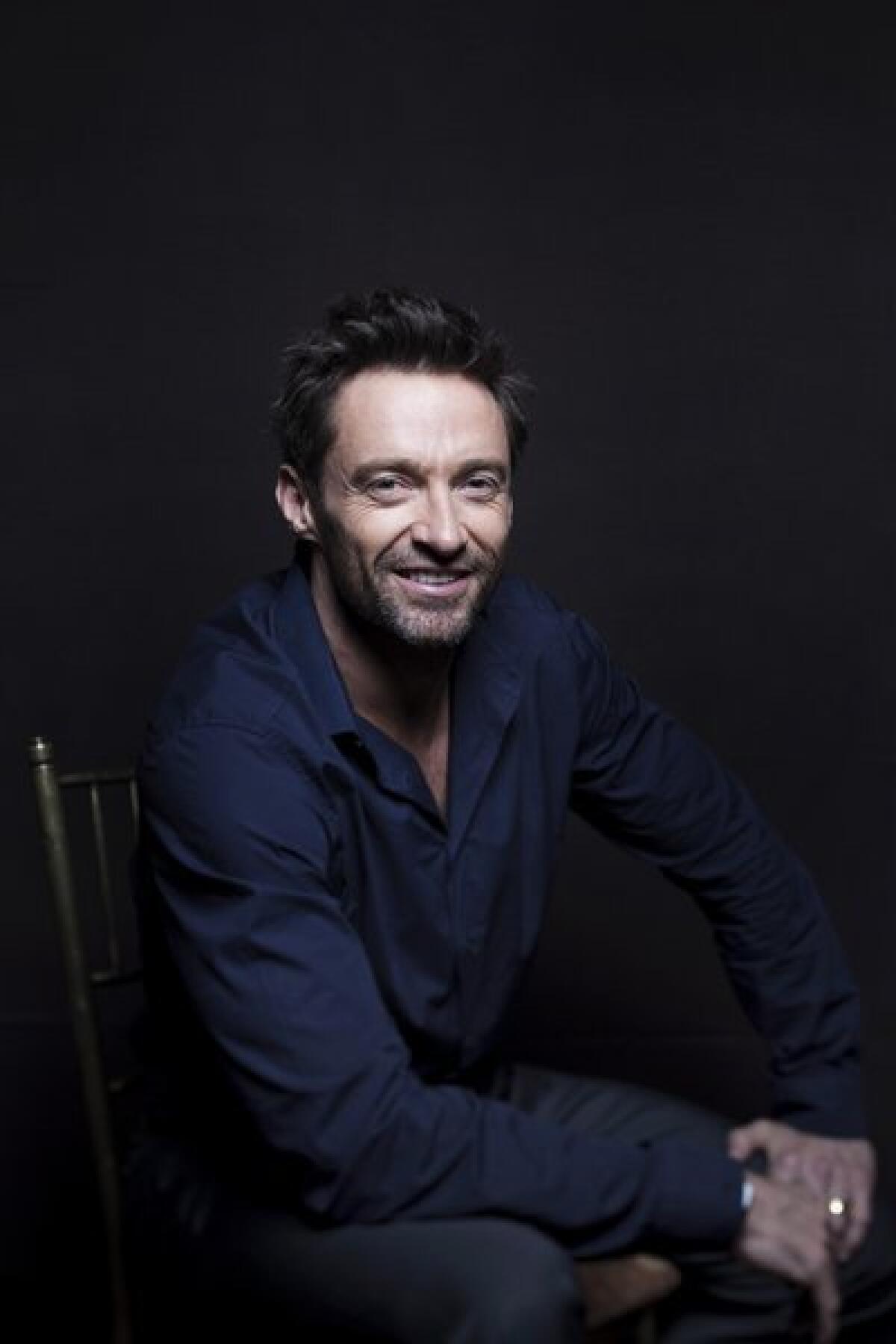
McNulty also reviews “Apple Season,” a play by E.M. Lewis at Atwater Village Theatre. McNulty notes a resonance with Horton Foote, but found the production lacking. “This is the kind of piece that needs to be deeply inhabited, but Lewis has prepared only a dramatic sketch,” he writes.
My colleague Jessica Gelt hung out with actors plowing their way through “The Mueller Report Read-A-Thon.” “Taken together, these epic readings of a historic, consequential and often misunderstood government document have become a trend,” she writes. “The Mueller report is the summer’s sleeper hit.”
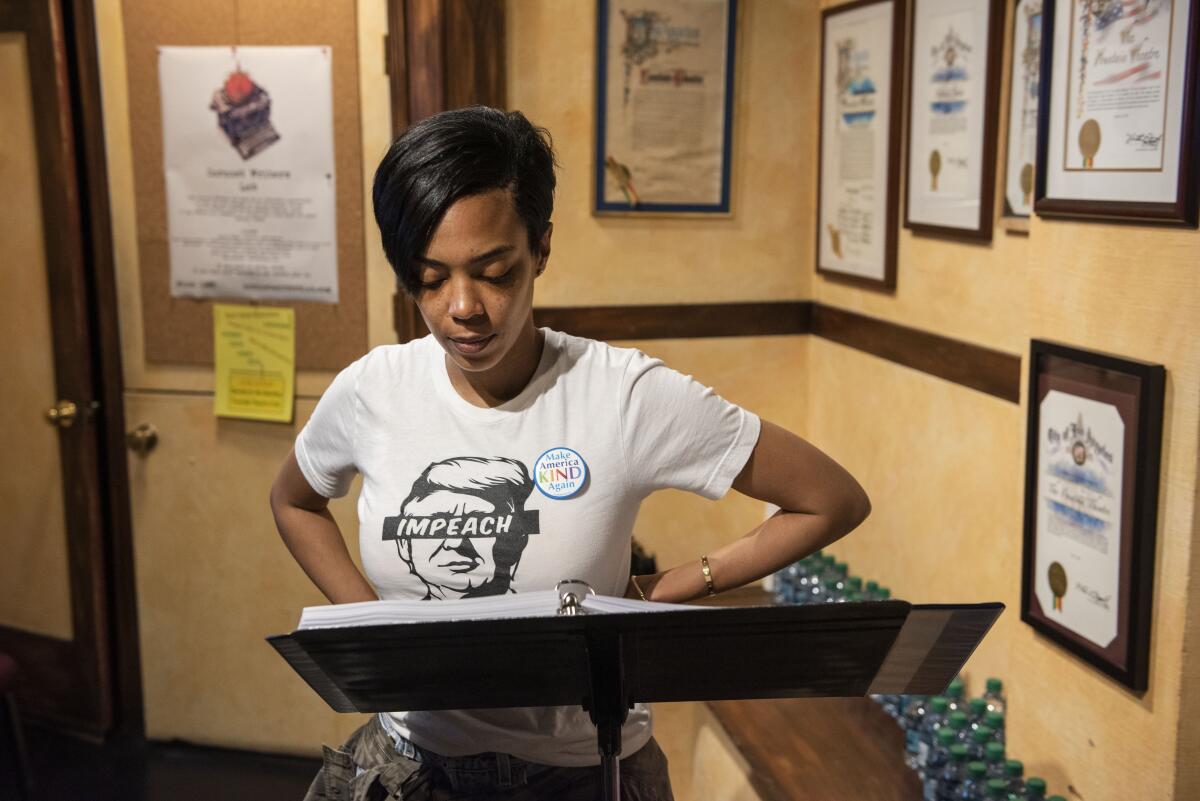
“Miss Saigon” has landed at the Hollywood Pantages Theatre. The production values are “exceptional,” the script updated and, notes contributor Margaret Gray, “it’s impossible to watch ... without thinking of the family separations ... happening at our southern border.” But there’s a ‘but’: “
‘Miss Saigon’ ... stringently maintains we made a mess in Vietnam and then bailed without cleaning it up. But underpinning this critique is the pernicious myth of America as savior.”
The Antaeus Theatre Company has “stylishly” revived Bertolt Brecht‘s 1944 play, “The Caucasian Chalk Circle.” The narrative, about a dispute between two groups of peasants “has grown even more relevant with the widening gaps in wealth,” writes Philip Brandes.
A record of black life
Ebony magazine’s photo archive, which includes iconic images of Muhammad Ali, Billie Holiday and Jimi Hendrix, has found a home. The collection had gone up for auction as part of the Johnson Publishing Company‘s bankruptcy proceedings. This week, a consortium of charitable foundations that include the Ford Foundation, the Andrew W. Mellon Foundation and L.A.’s J. Paul Getty Trust acquired the archive for $30 million.
Quite incredibly, the plan to purchase the images came together hastily. “The concern was that it should be brought into the public domain,” says Ford Foundation president Darren Walker.
In the galleries
The Getty Museum is currently the site of a beastly exhibition about bestiary, the medieval manuscripts that depicted fantastic creatures (unicorns and beavers, oh my!). Art critic Christopher Knight found the show “sumptuous.” Says he: “Astoundingly, nearly one-third of the 60 known books have been brought together for this indispensable show.”
At the Museum of Contemporary Art Los Angeles, it is the humans who appear physically impossible. The Times’ Deborah Vankin reports on the museum’s acquisition of Xu Zhen’s “In Just a Blink of an Eye,” from 2014, in which live performers appear to be frozen in the act of falling.
And I speak with photographer Anthony Hernandez, known for capturing the “gray and grit” of Los Angeles, about his new show at Kayne Griffin Corcoran. “A city like L.A. is a lot of hard surfaces,” he says. “It’s a hard place to be.”
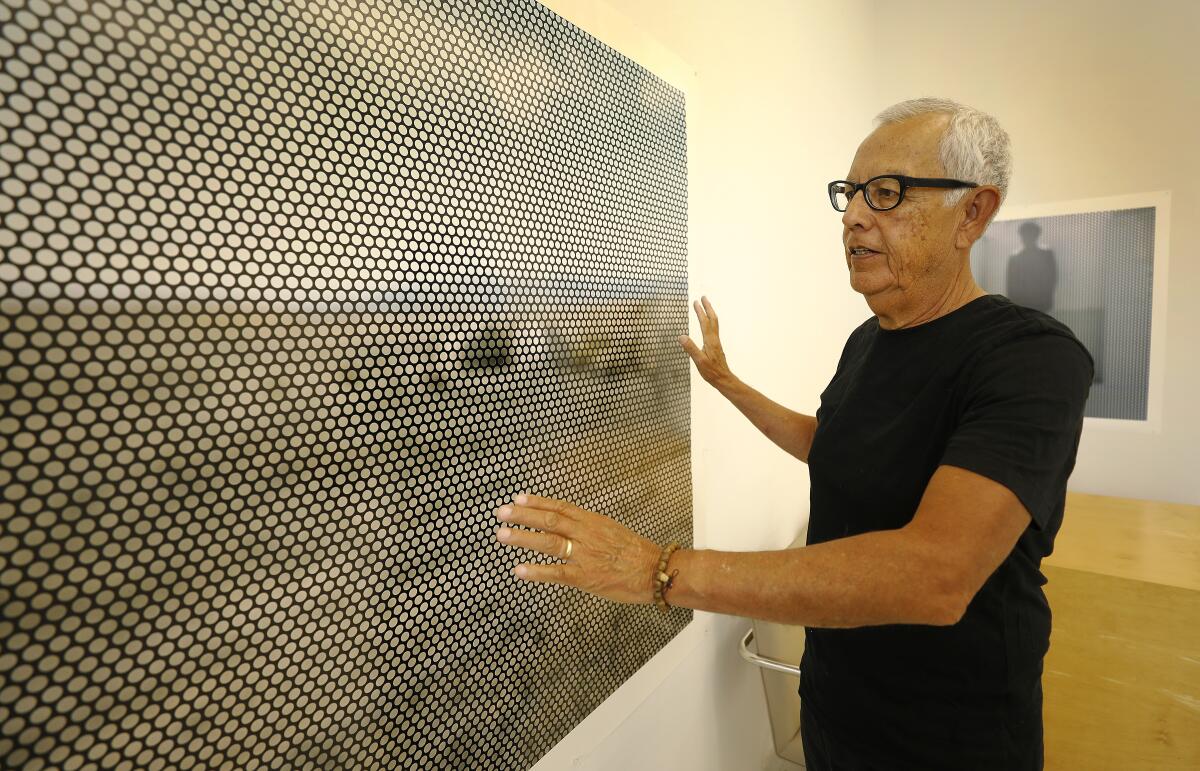
Sorta related: Tyler Green‘s interview with Hernandez from Hernandez’s retrospective at SFMOMA in 2016 is definitely worth listening to. (Maybe some enterprising L.A. curator will do a show of his Vietnam pictures?)
Classical notes
At the Hollywood Bowl, pianist Yuja Wang broke from repertory in favor of a more adventurous piano concerto by John Adams. Her performance with the L.A. Phil, writes Times classical music critic Mark Swed, was a study in “rhythmic grit.” The pianist “internalized Adams’ complex rhythmic passages to such a degree that they are part of her every fiber.”
Also at the Bowl was a performance of a “Mahler biggie” — the composer’s anguished Second Symphony — by the L.A. Phil and the Los Angeles Master Chorale. The “magnificent” performance, writes Swed, created a “stunned, attentive silence” broken only by the sounds of helicopters.
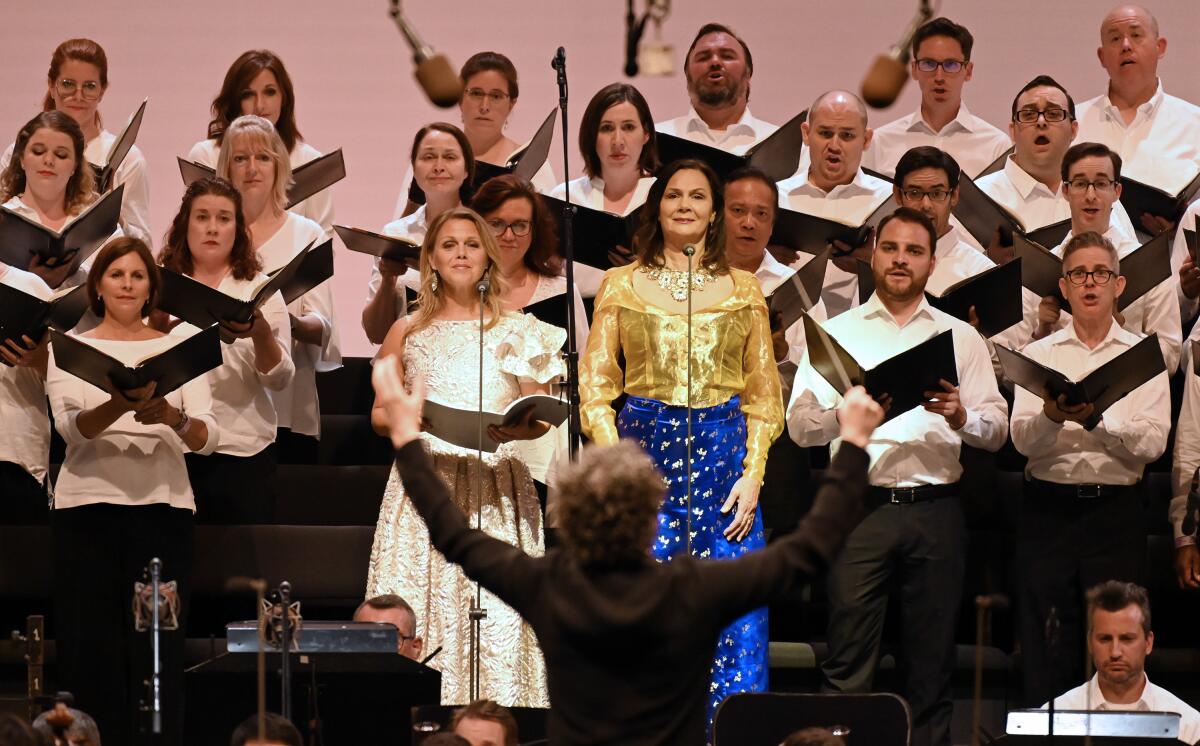
Swed also profiles sound artist Jeff Talman, whose new work for the Mt. Wilson Observatory, “Of Sound Before the Stars,” is inspired by the “original plasma material from which the universe was formed.” Staged in the observatory’s dome, “the sensations of the ear helped the eye make sense of what it saw peering into space,” writes Swed.
Another stadium for Inglewood
Inglewood’s Prairie Avenue is shaping up to be a stadium strip. The Los Angeles Clippers unveiled plans this week for a proposed 18,500-seat venue south of the Forum and across the street from the rising football stadium for the Rams and the Chargers. The AECOM design, funded by Clippers owner Steve Ballmer, evokes the diamond shapes of a basketball net. Plans also include a 150-room hotel and 63,000 feet of retail.
This raises gentrification concerns. As Erin Aubry Kaplan wrote in April: “Million-dollar houses would ruin our best asset, accessibility. This is a place that real people can still afford to live.”
Protest at the Whitney
The Whitney Museum and its vice chairman Warren B. Kanders became the subject of protest late last year after arts website Hyperallergic reported that tear gas linked to a company he owns was deployed on migrants at the U.S.-Mexico border. Protests by artists, scholars and museum staff have since grown in tenor and scope.
In February, artist Michael Rakowitz (subject of a current exhibition at REDCAT) withdrew his name from a roster of artists slated to appear in the Whitney Biennial. And Forensic Architecture, a collective in the show, created an analysis of the ways in which the company’s tear gas had been used in conflict zones around the world. Late last week, another eight artists asked to have their work removed from the Biennial (which opened in May).
This week, after increasing scrutiny, Kanders resigned.
In response, the Ford Foundation’s Darren Walker wrote an op-ed about why this is an important moment for museums: “At a time when institutions face greater pressure than ever to raise resources, their boards have veered too far toward only appointing trustees with wealth. But we know there are other valuable forms of capital not easily measured in dollars and cents.”
Passages
Marisa Merz, the only woman affiliated with Italy’s Arte Povera movement, and subject of a solo exhibition at the Hammer Museum in 2017, has died at the age of 93.
Cesar Pelli, the Argentine-born architect who designed recognizable landmarks for cityscapes around the globe, such as the Petronas Towers in Kuala Lumpur, has died at 92. Times deputy managing editor Shelby Grad evaluates the unforgettable building he made for SoCal: the Pacific Design Center, the interior design complex in West Hollywood affectionately known as “the Blue Whale” (since it was the blue part that was built first).
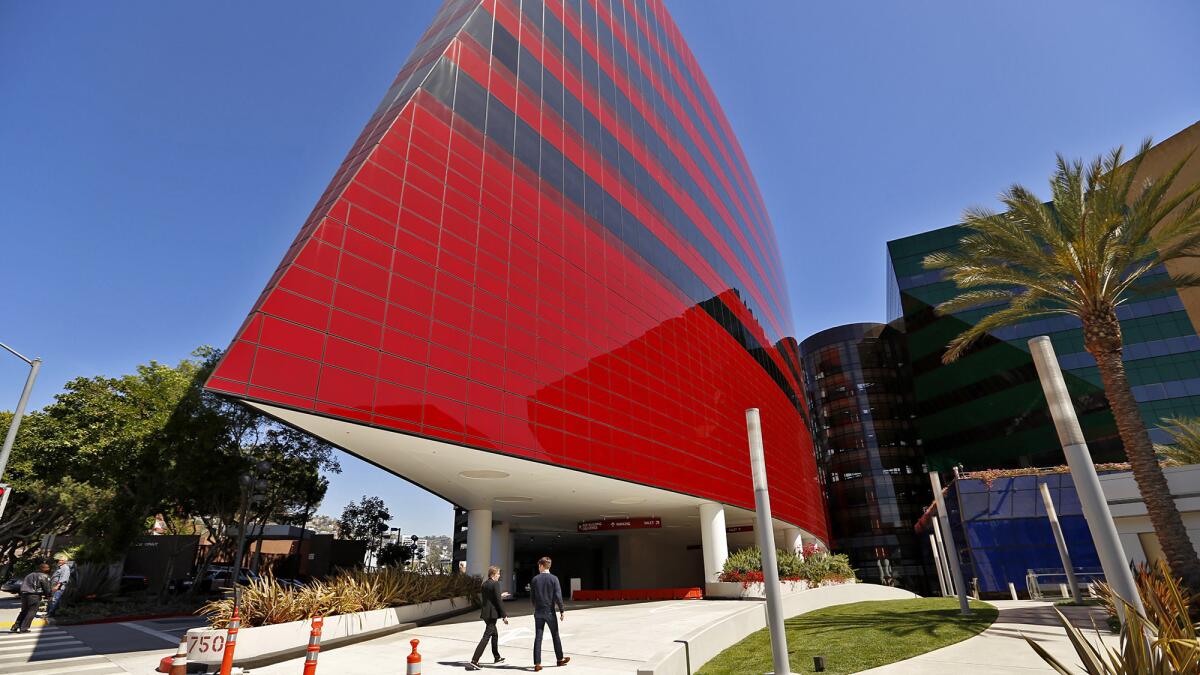
Ready for the weekend
My weekly Datebook has all the latest art listings, including a performance art festival at REDCAT. And I’ve got the lowdown on a performance involving sleep machines that will be staged by composer Guillermo Galindo and Postcommodity at the 18th Street Arts Center‘s new space at the Santa Monica Airport.
Matt Cooper has the weekend picks, as well as the week ahead in music, dance, theater and art, including a survey of shimmering works by L.A. painter Mary Corse at LACMA.
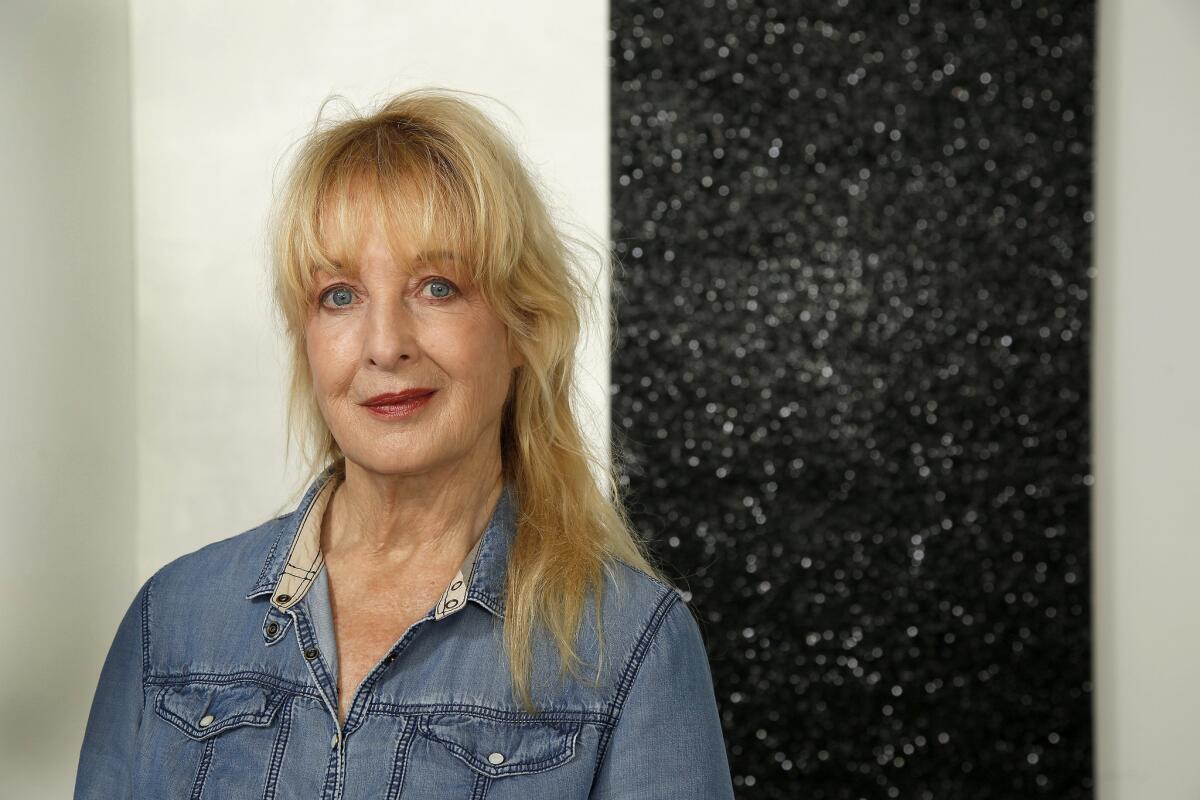
In other news...
— An intense heat wave in France is raising the risk that Notre-Dame‘s burned ceiling might collapse.
— A pair of groups are suing the city of Los Angeles over the proposed razing of Amoeba Music in Hollywood, arguing that it is a “cultural resource.”
— Architecture critic Justin Davidson reviews how New York City design fares in the department of accessibility. (Hint: Not well.)
— Street artist Sabo vandalized a billboard for “Once Upon a Time ... in Hollywood” with images of Jeffrey Epstein and Roman Polanski.

— Donald Trump appeared at an event before a doctored presidential seal that featured a Russian two-headed eagle clutching golf clubs. Charles Leazott, the graphic designer (and former Republican) who created it said he “had no idea it would blow up like this.”
— Nathan Solis explores the history of the indigenous human remains in the collection of the Autry Museum.
— Jörg Colberg on Instagram‘s censorious ways. (Note: the post contains nudity.)
— Early video of a performance by Kembra Pfahler at a Chinese restaurant in Manhattan — or why I loved public access TV.
And last but not least...
The protests in Puerto Rico have resulted in political change. They have also resulted in this groovy jam by musicians Residente, Bad Bunny and iLe.
More to Read
The biggest entertainment stories
Get our big stories about Hollywood, film, television, music, arts, culture and more right in your inbox as soon as they publish.
You may occasionally receive promotional content from the Los Angeles Times.


